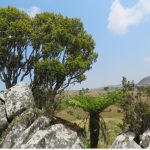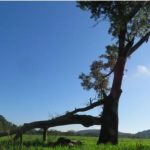TREE LIFE
DECEMBER 2022
508
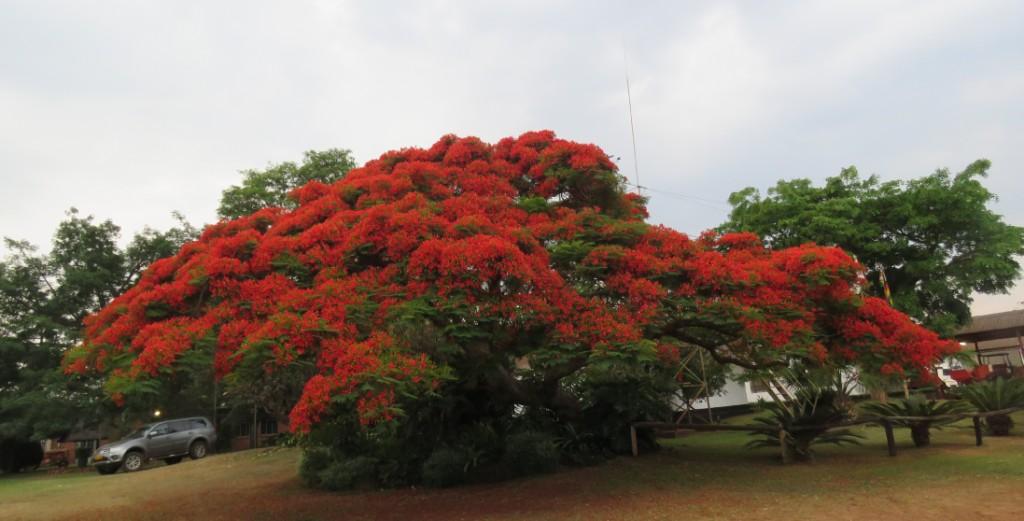
Delonix regia Photo by Rob Jarvis
Hi Everyone,
Isn’t the rainy season just wonderful! And although there is a push worldwide to revert to indigenous trees that belong in our home areas I think our lives would be that much poorer without the spectacular flowering trees, that mankind in his wisdom, has brought to places far removed from their centres of origin. And there is no brighter, more cheerful tree than the flamboyant whose common name really reflects its presence in our landscape.
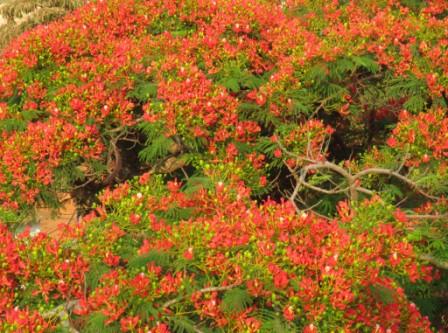
Delonix regia Photo by Rob Jarvis
We have a particularly beautiful one out here at ART Farm which graces the garden around our offices and in our case we have a purpose-built tower right next to the tree so we can photograph it easily, from above, below and sideways on! Flamboyants are from Madagascar originally and known as Delonix regia, and if only Christmas was in November they would be the perfect tree to host the Family Lunch in their shade. Festive decorations would be superfluous under such beauty.
Tree Walk at National Botanical Garden on 9-11-22
by Jan van Bel
A cool cloudy day with the rainy season on the doorstep. 10 people had gathered at the parking place. Meg, Mark and Tony were present, promising a load of interesting information.
In front of the cars there is the Combretum celastroides, Jesse-bush combretum, which needed some confirmation as to distinguish it from Combretum elaeagnoides, grey jesse-bush combretum. A few leaves remaining helped the identification by looking for the scales on the lower surfaces of the leaves. The leaves are also more ovate than the rather narrowly elliptic C. elaeagnoides, which leaves are lighter grey on the underside.
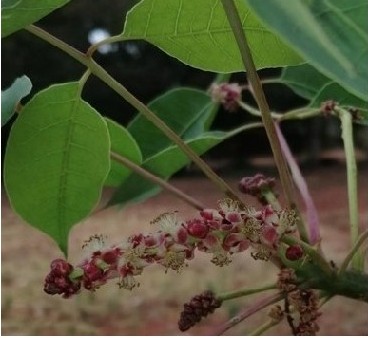
Male Sclerocarya birrea in full flower Photo by Jan van Bel
Xeroderris stuhlmannii, wing pod, ready to start flowering. Tony showed us a second same species 10 metres away, that had already flowered a few weeks before.
We stopped at a tree with flaking green-brown bark and no leaves. Some guessing and suggesting ended in agreeing on Commiphora mollis, soft-leaved commiphora. Close by a Commiphora karibensis, angular stemmed commiphora, proved to have the expected clear sap besides the typical trunk.
Sclerocarya birrea. Marula, was in flower and a close inspection of the flowers showed us plenty of stamens but no female parts. Elaboration about dioecious and monoecious trees followed with the example here of a male tree that never produces fruit.
Ficus glumosa, African rock fig, still causing some debate as this specific tree is not as hairy as we are used to find them. Someone even suggesting that it could be a Ficus stuhlmannii, lowveld fig. However the leaf shape indicative of F. glumosa.
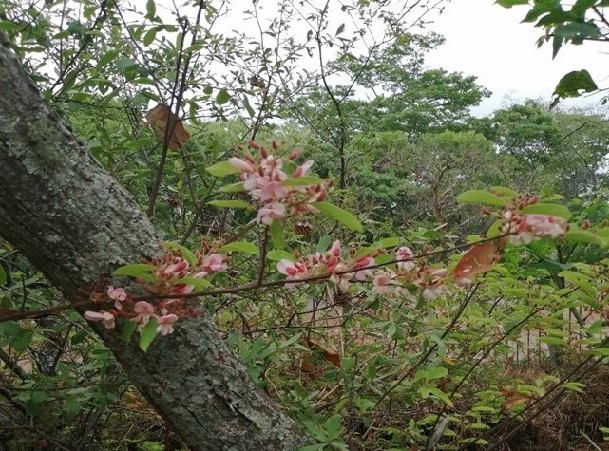
Baphia massaiensis Photo Tony Alegria
Cordyla africana, wild mango, was still flowering. Always very attractive when in full bloom. Passing at the Acacia eriocarpa, woolly-podded acacia, which still had no flowers or pods left us wondering if it has the right label or if it is the same species as the two Acacia erioloba, camel thorn, which are flanking it and producing flowers and pods. It may be the right label as this is the Zambezi Valley part of the park where this tree feels home.
Baphia massaiensis, Jasmine pea or sand camwood, was in flower and worth a proper look at the attractive pea-type flowers.
There are two of these trees next to each other, one with whiter flowers than the other. It was now threatening to rain, but Tony had some more nice flowering trees to show us, so we rushed forward and past the Stereospermum kunthianum, that was also in flower and a real attraction especially after hearing the common name which is pink jacaranda.
The tree we were rushing for was the Cassia ferruginea, an impressive big tree full of cascading yellow flowers with a nice perfume. Not for nothing it is commonly named the Imperial cassia. Its home is Brazil.
It was now starting to drizzle and we rushed back to the cars. Earlier than usual but satisfied with what we were able to observe.
Dandaro afternoon outing, Saturday 22nd October
By Tony Alegria
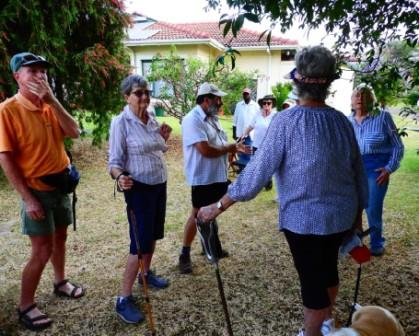
Dandaro afternoon outing Photo by Jim Dryburgh
On a rather hot Saturday afternoon we had a tree walk within the Dandaro complex. Present were the ladies: Ann Sinclair, Mary Toet, Marilyn Dickenson, May Dawes, Teig Howson and a Dandaro resident, Liz Nugent who has since become a new member. Only a few men: Ian Riddell, Jan van Bel, Jim Dryburgh and myself.
When I first arrived at the gate, the one thing I noticed was that there are a large number of indigenous trees growing between the Dandaro side road and the Borrowdale Road. I think we can easily explore this area on an afternoon walk and invite the residents of Dandaro to join us.
There are many, many exotic trees within the complex and very few indigenous trees. Not a single msasa or munondo to be seen which is not surprising as Dandaro is built on the edge of a wetland!
Marilyn took us around the complex and en route we tried to identify all the trees and failed – but not too badly! We walked between buildings, along the fence and on some roads. Over the wall and in the Celebration Centre was a long line of Syzygium jambos, rose apple, whose fruit are large when compared to the waterberries and have the taste of the smell of roses! There were a few waterberry trees, Syzygium species, we could not identify but we did recognize the Syzygium guineense, Syzygium cordatum and Syzygium paniculatum. Syzygiums were very common within Dandaro! On the Dandaro side of the Celebration Centre wall there is a road lined with street trees, Bauhinia blakeana which are hybrids and don’t have any pods but do have normal sized purple flowers.
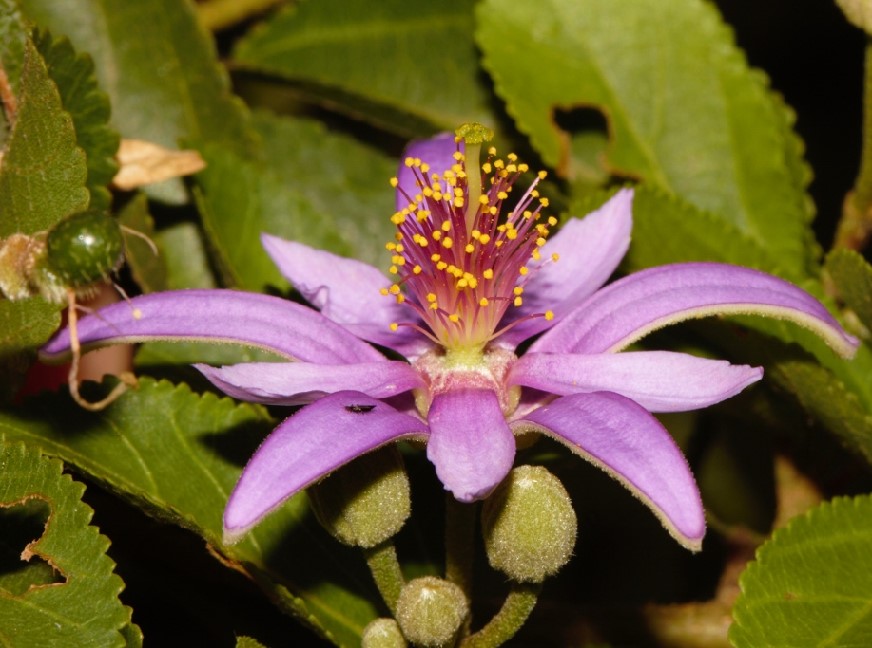
Grewia occidentalis Photo by Ian Riddell
Two very common trees were the Vitex trifolia (both purple and green varieties) and Duranta erecta, forget-me-not with different cultivars present. Common names for the forget-me-not trees include pigeon berry and the one I like best – golden dew drops.
Melaleuca also had two species, one with dark green leaves and the other with light green leaves – Johannesburg gold?
Most of the fruit trees we saw were on the smallish side: Persea americana, avocado pear tree; Psidium gujava. guava tree; Prunus persica, peach tree; Prunus domestica. plum tree and Ficus carica, common cultivated fig for eating.
Both Cestrum and its look alike Jochroma were present in an assortment of colours. Also both species of pepper tree were present Schinus molle and Schinus terebinthifolius.

Metrosideros kermadecensis photo by Mark Hyde
Popping out of a hedge was something unexpected – a Dodonea viscosa. Some of the other indigenous trees seen were: Acacia polyacantha, Acacia sieberiana, Dovyalis caffra, Grewia occidentalis and Schotia brachypetala. Some of the other exotic trees seen were Polygala myrtifolia, Cascabela thevetia, Nerium oleander, Lagerstroemia speciosa, Hamelia patens and what was identified as possibly being Metrosideros kermadecensis. The one biggish tree I knew had become a stump! But there were a couple of small ones elsewhere. If Mark’s identification is correct, this means that the New Zealand Christmas bush is an evergreen tree of the myrtle family and is endemic to a small volcanic island – Raoul. This island with an area of less than 30 sq kms, is the largest of the Kermadec Island group which belong to New Zealand some 900 kms away.
After our afternoon stroll around Dandaro, Marilyn kindly offered us some tea which was gratefully accepted.
A few days after the Dandaro tree outing I received two emails from Tree Society members apologizing for not coming on the walk – they were residents of Dandaro!
Editor’s Note,
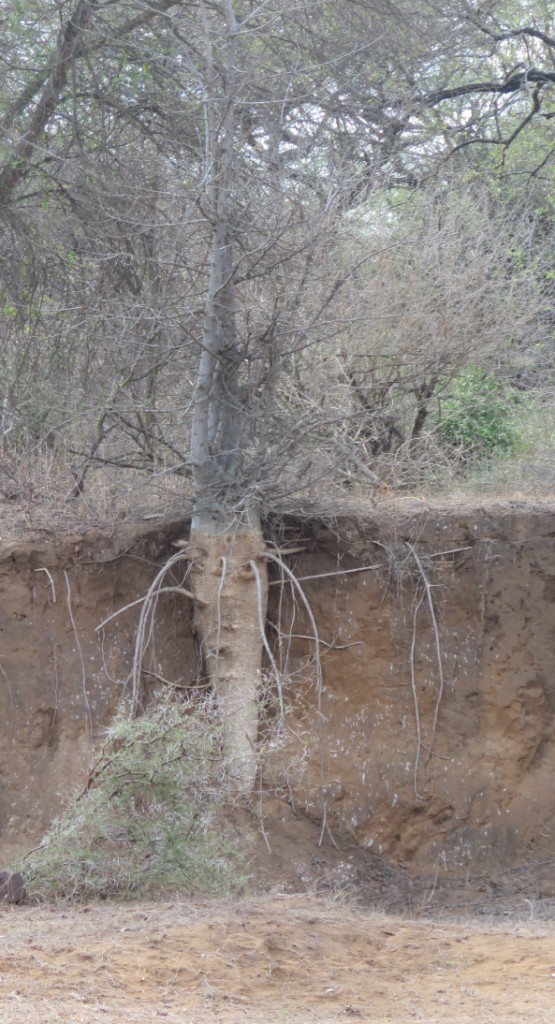
Roots of baobab Photo by Rob Jarvis
Last month’s Tree Life 507 had the baobab as Tree of The Month. A characteristic of young baobab saplings is that they quickly form a long deep taproot to help the trees get established in the usually hot, arid areas where the trees thrive. At Gonarezhou a couple of weeks ago we chanced upon this baobab whose underground root system had been exposed by the local rural council digging earth for potholes on the roads. We were surprised to see that even this tree, which is probably around 20 years old, still had its taproot clearly visible and very definitely the dominant part of the underground root structure. Baboons, and probably other wildlife, like warthog, rip young saplings out of the ground and eat these roots in particular. Given the vast numbers of baboons in many of our Parks, sowing baobabs by tossing seed balls out the car window will in all likelihood be a futile exercise. In Nature, historically there must be some combination of suitable events that allowed the existing populations of baobabs to get established and to survive the depredation of wildlife. These were likely a fall in wildlife populations and a series of good rainfall seasons that allowed the seed to germinate, take hold and grow to a size where they could then take herbivore damage. Sapling and sub-adult trees, like the one in the picture are few and far between.
Tree of The Month, Philenoptera violacea, Apple leaf, Rain-tree
by Rob Jarvis
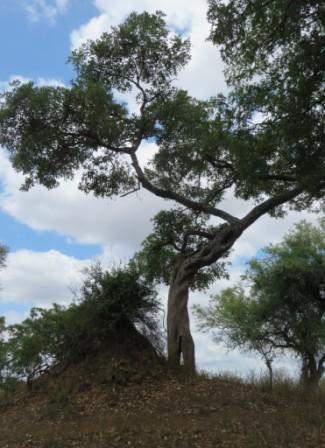
Philenoptera violacea Photo by Rob Jarvis
These are very common trees in the Lowveld, mainly in riverine habitat. On a recent visit to Gonarezhou, southern section, along the Mwenezi River there were many magnificent specimens to be seen. The one on the left can be found just downstream from the main camp at Simuwini.
Right nearby was the amazing tree bole that had been rubbed smooth with a very polished patina from endless pachyderms and ungulates, that obviously pause on their way down to, or away from the river below, where they come to water in their hundreds. I doubt whether any carpenter could achieve such a finish no matter how many times he or she applied their talents to this magnificent wood. And of course the tree is still living and undoubtedly provides shade, safety and food to a multitude of living organisms. These trees are often referred to as rain-trees because of the pools of water sometimes found below them, especially during the hot dry months prior to the rains, when a sucking insect, a frog-hopper, Ptelus grossus, pierces the bark with its purpose-made mouth parts, covers itself with frothy bubbles and proceeds to suck out sap and emit almost pure water to splash down onto the parched earth below.
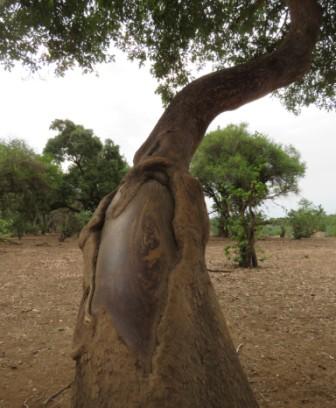
Smooth tree bole Photo by Rob Jarvis
Information extracted from
Trees of Southern Africa, New Edition,
updated by Meg Coates-Palgrave.
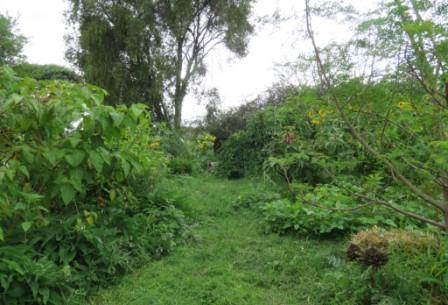
Forest gardening Photo by Rob Jarvis
Forest Gardening
My new rage by Rob Jarvis
I cannot tell you how exciting it has been to get into a sort of forest/permaculture/regenerative gardening frame of mind once we moved out to live at A.R.T. Farm on the outskirts of Harare. When I learnt how the farming world has been moving in the direction of letting Nature be the master of and guideline for growing crops, vegetables, cover crops, meadows and trees and bringing animals into the equation, well the world was our oyster. We had a blank palette, a large garden, no particular objectives or pre-misconceptions in mind, a reasonable amount of water to use and bang we were and are in business.
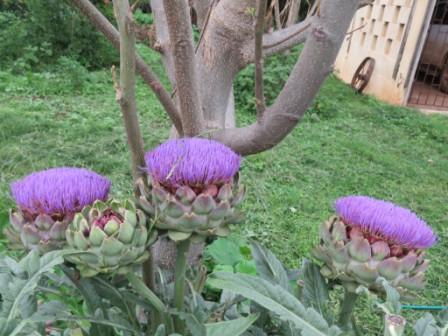
Artichokes Photo by Rob Jarvis
So our only guideline is, I don’t want to use a single chemical or synthetically produced fertiliser in the garden. We want maximum biodiversity, both in the trees we choose, the vegetables, herbs and fruit trees we grow and we supplement and feed them with homemade compost, a banana-skin tea brewing away in a large cast-iron bath. We are now almost two years down the line and we have been amazed by the results. We allow weeds to take root and pull them out of the ground with soil attached and shake this on to the compost heaps on top of previously pulled and shaken greenery. The heaps are covered with matured compost. Weeds and virtually any plant are allowed to grow on and around the heaps. We want living roots and biodiversity big time. When we are hungry we pluck fruits and vegetables, flowers and leaves at will. The front lawn is a meadow and with no mowing required, everything takes its chance and if we think something is pesky, we uproot and chuck on a compost heap.
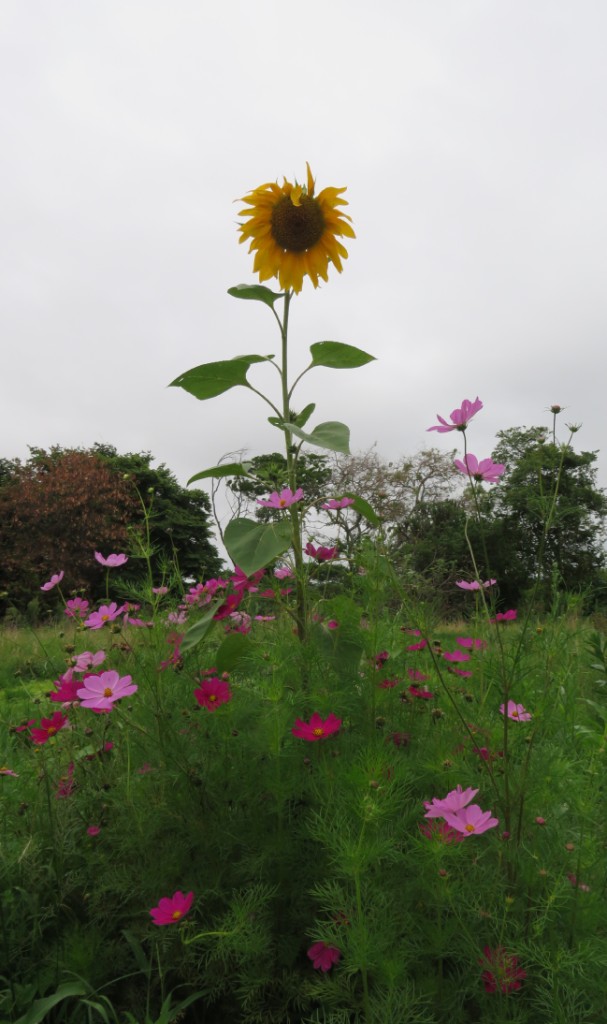
Cosmos & sunflower Photo by Rob Jarvis
So for now our front lawn has these little islands of prosperity and diversity, IPADS, for short and all around them young plants have germinated and are beginning to grow. Here and there we have planted some indigenous trees and after nearly 18 months, they are starting to take off. The IPADS include cheerful sunflowers and cosmos, but there are also indigenous grasses, self-sown, various leguminous plants like dolichos, sunhemp and the like. And we only rip out noxious weeds and they go straight on the compost. I have great difficulty explaining to the long-suffering spouse that in fact blackjacks, khaki weed, amaranths and the like are part of the eco-system and that over time, when the soil is rich with vitality and humic-borne nutrients, they will fall by the wayside naturally. So probably by mid-February or so the whole acre in front of the house will probably be a blaze of pink, purple and yellow, bursting with bees, birds and other wildlife. And we do not have to do a single bit of gardening, Nature will have everything in hand.
The sunflowers already grow as tall as trees and we can comfortably sit in their shade, qualifying them for inclusion in this Tree Life newsletter. They compost beautifully and provide bulk for the purpose built heaps. Literally the fibre of the digestive system of the garden. We already eat papayas, mangoes, pomegranates, figs, oranges, naartjies, avocados, mulberries, strawberries, granadillas, lemons, artichokes, tree tomatoes, gooseberries, tassel berries, carissa, everything is on the table. Leafy crops and salad entries like tomatoes, peppers, egg fruit, onions, leeks and beetroot, you grow at will, depending upon your own tastes. And no chemicals. Not one.
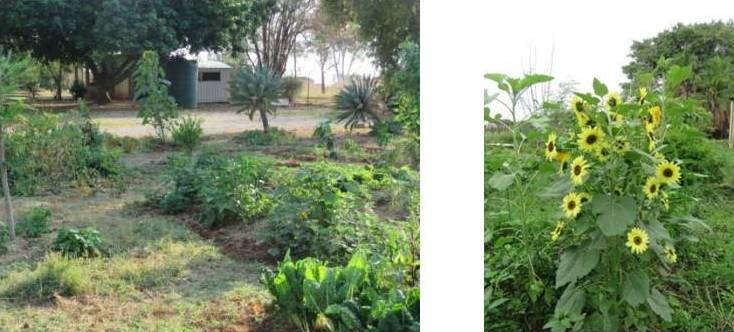
Left October 2021 and right November 2022 Photos by Rob Jarvis
You too can go this route and do your little bit to heal this Planet. Before it gets bombed to smithereens.
Lake Chivero at Margy Tredgold’s Chivero Property on 20-11-22
By Jan van Bel
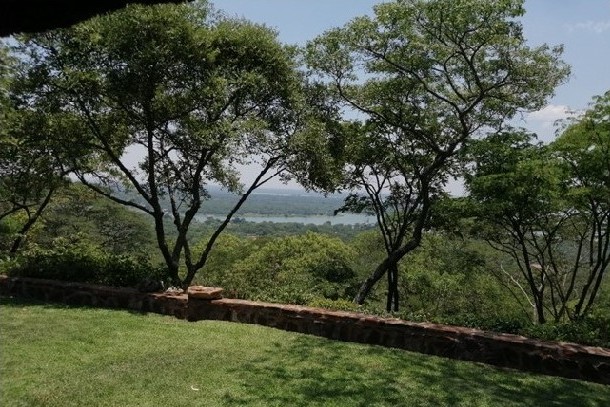 Overlooking Lake Chivero Photo by Jan van Bel
Overlooking Lake Chivero Photo by Jan van Bel
It was going to be a hot sunny day and the cool breeze from the lake making this outing even more attractive. Only 6 people turned up at the meeting place from where we drove to the house of Margy Tredgold on top of a hill at Lake Chivero. The view was breathtaking and we were much higher than we would expect these hills to be. We had passed beautiful houses with well maintained gardens all the way up to the top of the hill, where a sign was written Tamarind Hill.
A big Albizia tanganyicensis, paperbark albizia, several Brachystegia boehmii, mufuti, and Brachystegia glaucescens, (or B. tamarindoides) mountain brachystegias were immediately spotted. Some shade for parking the cars was provided by an unusually big Pittosporum viridiflorum next to one of the biggest ever seen Tabernaemontana elegans, toad tree.
The garden was laid out by use of terraces. A hedge of Acokanthera oppositifolia, common poison-bush, Dovyalis caffra, kei apple, and Mackaya bella bordered one of the terraces. Practically all trees were indigenous. Two old Schotia brachypetala and a Craibia also bordered the garden. On the side of the house an old Cussonia spicata, cabbage tree, was growing next to an Erythrina lysistemon, lucky-bean tree. We saw a few Burkea africana and Celtis africana. A very tall Pterocarpus angolensis, mukwa, was identified by the one fried egg (as we call the seed pod) that was still hanging. We saw a few more mukwa seedlings erupting in the compound.
Ficus burkei, Mimusops zeyheri, common red milkwood and a very big Gardenia volkensii , common gardenia, was seen. Cassia abbreviata, sjhambok pod tree, developing new leaves was easy to identify with last year’s sjhambok pods still hanging.
Walking around the house, Cussonia arborea, Vangueria infausta and Euphorbia tirucalli, rubber hedge euphorbia were seen. Searsia leptodictya, mountain karee, was a good and unusual find as it is mostly the Lancea species we see. Walking along the driveway we got some problem identifying a tree with scrawny branches and young developing compound leaves which made us think about commiphora’s but was finally put down as Cordyla africana, wild peach, we had been searching for after Margy had mentioned its presence. It was Meg who finally came up with that tag. A big acacia with a few knob thorns on the stem was probably Acacia goetzei subsp. microphylla, purple pod acacia. The leaves being too high to see them properly.
We saw and mentioned duiker berry, but Meg told us to use the scientific name as common names are sometimes used for different trees. Kudu and duiker berry causing confusion I am now being forced to type that longest of tree names. So we saw Pseudolachnostylis maprouneifolia, Brachystegia utilis and Dovyalis zeyheri, oval kei-apple.
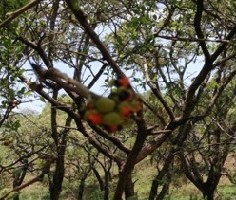
Turraea nilotica Photo by Jan van Bel
To end a Turraea nilotica, bushveld honeysuckle tree, attracted some interest. It’s not often we come across this and less so when in fruit. Meg wanted a picture of this, but focusing on the fruit was difficult for this amateur. See left, photo by Jan van Bel.
It is obvious that many of the trees here although indigenous, were planted and very well cared for, considering size and the location, far from the water on top of a mountain.
Thanks very much to Margy for the invitation and the tea. Thank you Ann for organising this.
Editor’s note: Lake Chivero is a very relaxing place to chill-out, especially on a no-wind summer evening. Pundits will tell you that the palm leaf and yacht sail, share much in common, with a rigid spine and a leaf or sail that can sit edge-on to the fiercest wind.
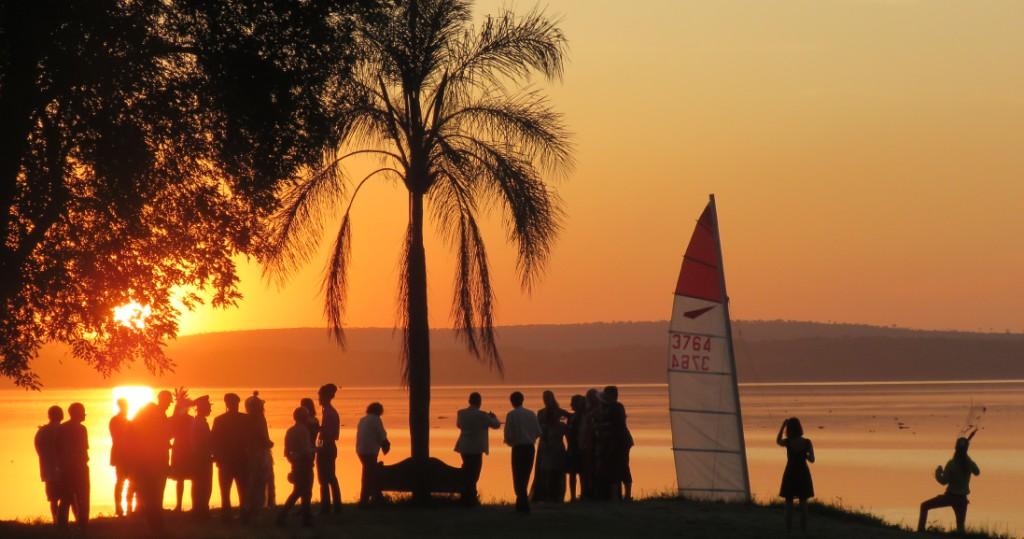
Yacht sail Photo by Rob Jarvis
TREE SOCIETY COMMITTEE AND CONTACTS
Chairman Tony Alegria tonyalegria47@gmail.com 0772 438 697
Vice Chairman Rob Jarvis bo.hoom52@yahoo.com 0783 383 214
Honorary Treasurer Bill Clarke wrc@mweb.co.zw 0772 252 720
Projects Jan van Bel jan_vanbel@yahoo.com 0772 440 287
Venue Organiser Ann Sinclair jimandannsincs@zol.co.zw 0772 433 125
Tree of the Month Ryan Truscott ryan.kerr.truscott@gmail.com 0772 354 144
Secretary Teig Howson teig.howson@gmail.com 0772 256 364
Tree Society Website https://treesociety.org.zw/
Tree Society Facebook https://www.facebook.com/groups/ztreesociety/
Flora of Zimbabwe: https://www.zimbabweflora.co.zw/
Flora of Tropical Africa: https://plants.jstor.org/collection/FLOTA
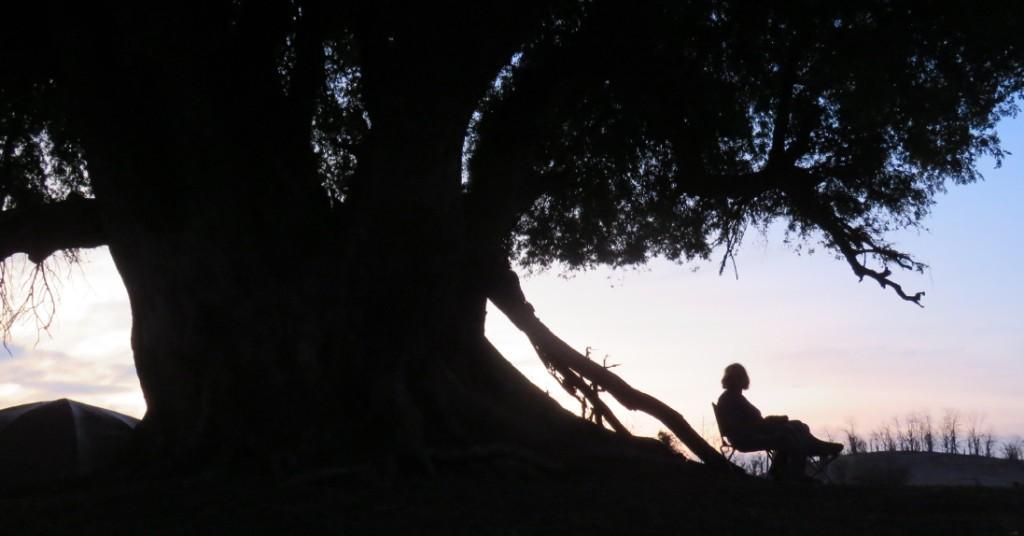
Relaxing Photo by Rob Jarvis


